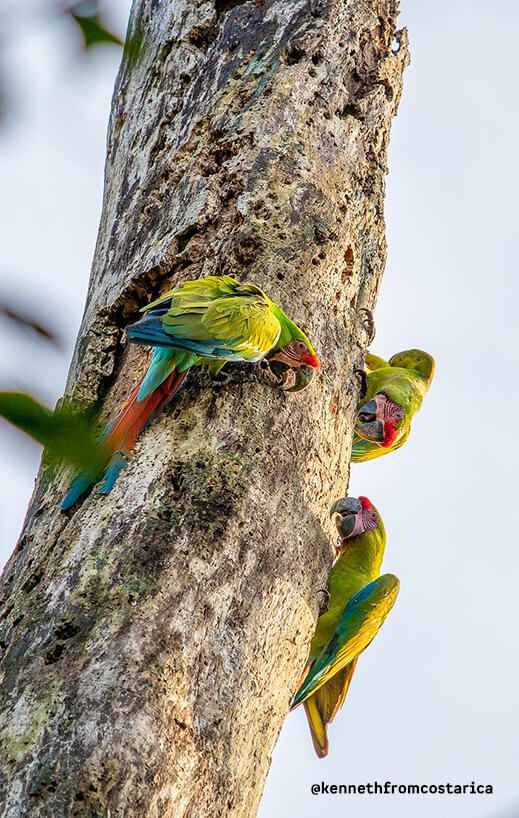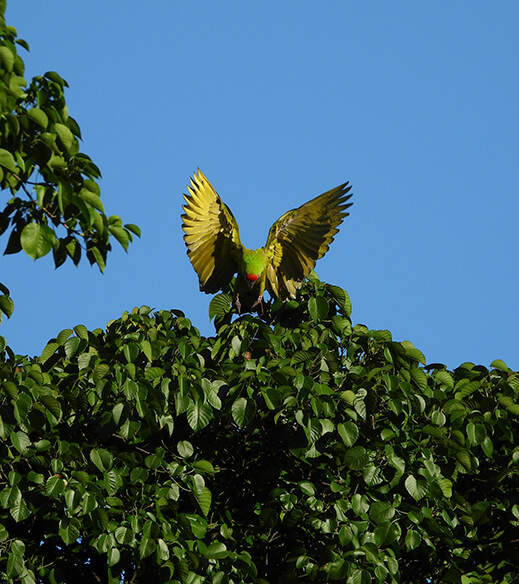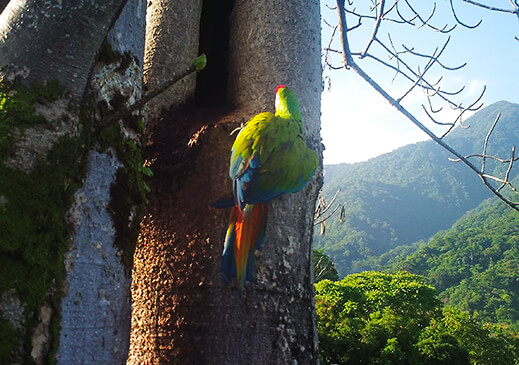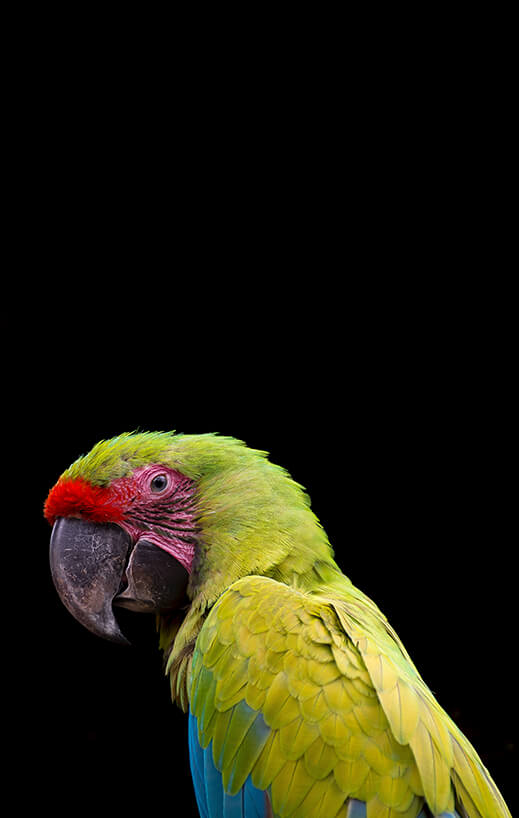The Great Green Macaws of Panama
The great green macaw (Ara ambiguus) is one of the most recognisable parrot species in the world; they are renowned for their beauty, intelligence, and charisma. However, because of recent and rapid declines in their numbers, they are in desperate need of your help. Presently, they are classified as critically endangered with less than 1000 adults left in the wild. By protecting these birds and their habitat, together we can support biodiversity conservation in one of the world’s most biologically important areas.
Macaws are long-lived and have a slow life history; they often only produce one chick a year and are inconsistent with their breeding attempts. Ensuring that wild adults can live long enough to fulfil their breeding potential can dramatically help endangered parrot populations recover. Due to the many threats that they face, such as lack of suitable nest sites andpredation of chicks, it may not be possible for them to breed or successfully fledge a chick. PWCC develops new great greenmacaw (GGM) conservation efforts with the help of the World Parrot Trust and SGP-UNDP and MiAmbiente in Panama .




Ecological habitat restoration is an attractive approach to protect wildlife in general. We aim to restore natural habitat for macaws in Cerro Hoya by planting key native tree species used by these parrots, with further ancillary benefits that will increase the delivery of ecosystem services, such as water resource protection, carbon sequestration and encourage local commerce by means of job creation in habitat work and ecotourism. Our project aims to restore the species habitat by planting hundreds of native trees every year. Some of the key native tree species used by great green macaws in Panama are: Brazilian fern tree (Schizolobium parahyba), hog plum (Spondias mombin), kapok (Ceiba pentandra), mountain almond (Dipteryx oleifera), sandbox tree (Hura crepitans) and needle flower tree (Posoqueria latifolia), all of which are critical for the survival of these endangered animals. Now you can help these macaws by planting their favourite native tree with LEAF, Learn more: https://leafwildlife.org/en/wildlife/great-green-macaw
Our environmental education programmes engage young people to take on the challenge to save these populations from extinction. We develop workshops around Cerro Hoya National Park communities, inspiring an appreciation for nature and parrots. The workshops use the environmental education materials developed by Ara Manzanillo in Costa Rica and The University of Manchester in the UK. School visits will teach children about conservation issues, learning about the value of macaws, their role in the environment, and teaching the young how to make decisions that will have a positive impact on their future. Another component of this project is to develop local birdwatching and ecotourism activities. Let us know if you want to see these macaws in the wild!
Recent expeditions by PWCC in the area reported the discovery of several GGM individuals within the buffer zone of the CHNP. These observations confirmed that the species uses the buffer zone as feeding and nesting grounds. However, nothing else is known about this isolated population, which is considered at high risk due to sustained levels of habitat loss. You can help these macaws to thrive in Azuero once more. Please consider donating, or buying a tree, online with our reforestation project called LEAF : check the native store here